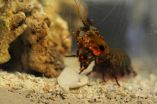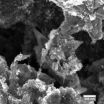(Press-News.org) HOUSTON – (April 22, 2014) – Biotechnology scientists must be aware of the broad patent landscape and push for new patent and licensing guidelines, according to a new paper from Rice University's Baker Institute for Public Policy.
Published in the current issue of the journal Regenerative Medicine, the paper is based on the June 2013 U.S. Supreme Court ruling in the case Association for Molecular Pathology (AMP) v. Myriad Genetics that naturally occurring genes are unpatentable. The court case and rulings garnered discussion in the public about patenting biological materials.
"The AMP v. Myriad Genetics case raises questions about the patent system," said Kirstin Matthews, the Baker Institute fellow in science and technology policy and an expert on ethical and policy issues related to biomedical research and development. She co-authored the paper with Maude Rowland Cuchiara, the Baker Institute scholar for science and technology policy. The paper has timely significance in light of President Barack Obama's recent announcements on reforming the nation's patent process, including an initiative announced in February to "crowdsource" the review of patents.
"There are not many opportunities to challenge patents once they have been granted, and the options that are available are costly and mostly limited to lawsuits," Matthews said. Judges typically do not have the scientific knowledge to understand some of the technical arguments that are made in their courts, she said. "It may be better, as President Obama has proposed, to revise patenting guidelines at the U.S. Patent and Trademark Office based on feedback from scientists, engineers, ethicists and policy scholars as opposed to leaving it up to the courts."
Until the Supreme Court's decision, Myriad Genetics was the only company in the U.S. that could legally conduct diagnostic testing for BRCA 1 and 2, genes that are linked to familial breast and ovarian cancer. The company was granted the patents in 1998 and 2000, respectively. Myriad chose not to license the patents and harshly pursued anyone who infringed on them.
"The patenting of the BRCA genes launched a raucous debate about the ability to patent life: How do we distinguish between what is simply discovered and what is truly 'made by man'?" the authors asked.
Biotechnological inventions have been patented for several decades, though the criteria for patent eligibility have been refined through numerous court decisions, according to the authors. One of the most influential was Diamond v. Chakrabarty, which determined that "anything under the sun made by man" could be patented, leading to the diverse biotechnology patent landscape seen today, the authors said. However, biotechnological patents must meet the same requirements as all other patents, and they cannot be laws of nature, physical phenomena or abstract ideas.
The authors said the ruling could affect the patentability of other biotechnologies, like stem cells, depending on how the ruling is interpreted. Stem cells, like genes, are also isolated from the body although they do require some manipulation after isolation. But it is likely that if stem cell patents include detailed procedures for the manipulations beyond isolation, they will be upheld. "However these types of patents could also be challenged for failing to meet other patenting requirements like non-obviousness – meaning that they were not really unique or original after all," the authors said.
Overall, it remains to be seen what impact the ruling in the AMP v. Myriad Genetics case will have on the biotech industry or if any patenting requirements will be changed in response to this or other court rulings, the authors said. So far, the patentability of biotechnological inventions appears to remain unaffected. "However, as more and more biotechnological inventions are patented, the line between what is and is not a 'product of nature' becomes blurred and will most likely continue to be decided in a courtroom," the authors said.
The authors suggest initial steps to address the current situation, including an outside review of patents before they are granted, reforming the rules of patent licensing to minimize restrictive practices and requiring detailed patent descriptions to prevent expensive and disruptive lawsuits.
"Moving forward, scientists must be aware of the broad patent landscape and push for new patent and licensing guidelines," the authors said. "This could keep patents out of court, make the patenting process more seamless and help to spur innovation."
INFORMATION:
To schedule an interview with Matthews or Rowland Cuchiara about their paper, "Gene Patents, Patenting Life and the Impact of Court Rulings on U.S. Stem Cell Patents and Research," contact Jeff Falk, associate director of national media relations at Rice, at jfalk@rice.edu or 713-348-6775.
Related materials:
Regenerative Medicine journal: http://www.futuremedicine.com/loi/rme
Matthews bio: http://bakerinstitute.org/experts/kirstin-rw-matthews
Matthews on Twitter: http://www.twitter.com/stpolicy @stpolicy
Rowland Cuchiara bio: http://bakerinstitute.org/experts/maude-rowland-cuchiara
Follow Rice News and Media Relations via Twitter @RiceUNews.
Founded in 1993, Rice University's Baker Institute ranks among the top 15 university-affiliated think tanks in the world. As a premier nonpartisan think tank, the institute conducts research on domestic and foreign policy issues with the goal of bridging the gap between the theory and practice of public policy. The institute's strong track record of achievement reflects the work of its endowed fellows, Rice University faculty scholars and staff, coupled with its outreach to the Rice student body through fellow-taught classes — including a public policy course — and student leadership and internship programs. Learn more about the institute at http://www.bakerinstitute.org or on the institute's blog, http://blogs.chron.com/bakerblog.
New patenting guidelines are needed for biotechnology
2014-04-22
ELSE PRESS RELEASES FROM THIS DATE:
Mantis shrimp stronger than airplanes
2014-04-22
RIVERSIDE, Calif. — Inspired by the fist-like club of a mantis shrimp, a team of researchers led by University of California, Riverside, in collaboration with University of Southern California and Purdue University, have developed a design structure for composite materials that is more impact resistant and tougher than the standard used in airplanes.
"The more we study the club of this tiny crustacean, the more we realize its structure could improve so many things we use every day," said David Kisailus, a Kavli Fellow of the National Academy of Science and the Winston ...
NASA gets 2 last looks at Tropical Cyclone Jack
2014-04-22
VIDEO:
This 3-D flyby from NASA's TRMM satellite of Tropical Cyclone Jack on April 21 shows that some of the thunderstorms were shown by TRMM PR were still reaching height of...
Click here for more information.
Tropical Cyclone Jack lost its credentials today, April 22, as it no longer qualified as a tropical cyclone. However, before it weakened, NASA's TRMM satellite took a "second look" at the storm yesterday.
The Tropical Rainfall Measuring Mission or TRMM satellite had two ...
High-performance, low-cost ultracapacitors built with graphene and carbon nanotubes
2014-04-22
WASHINGTON D.C., April 22, 2014 -- By combining the powers of two single-atom-thick carbon structures, researchers at the George Washington University's Micro-propulsion and Nanotechnology Laboratory have created a new ultracapacitor that is both high performance and low cost.
The device, described in the Journal of Applied Physics, capitalizes on the synergy brought by mixing graphene flakes with single-walled carbon nanotubes, two carbon nanostructures with complementary properties.
Ultracapacitors are souped-up energy storage devices that hold high amounts of energy ...
International team sequences rainbow trout genome
2014-04-22
PULLMAN, Wash.—Using fish bred at Washington State University, an international team of researchers has mapped the genetic profile of the rainbow trout, a versatile salmonid whose relatively recent genetic history opens a window into how vertebrates evolve.
The 30-person team, led by Yann Guiguen of the French National Institute for Agricultural Research, reports its findings this week in Nature Communications.
The investigators focused on the rate at which genes have evolved since a rare genome doubling event occurred in the rainbow trout approximately 100 million years ...
Wildlife response to climate change is likely underestimated, experts warn
2014-04-22
AMHERST, Mass. – Analyzing thousands of breeding bird surveys sent in by citizen scientists across the western United States and Canada over 35 years, wildlife researchers report that most of the 40 songbird species they studied shifted either northward or toward higher elevation in response to climate change, but did not necessarily do both.
This means that most previous studies of potential climate change impacts on wildlife that looked only at one factor or the other have likely underestimated the effects of environmental warming, say research wildlife biologists ...
Vacuum ultraviolet lamp of the future created in Japan
2014-04-22
WASHINGTON D.C., April 22, 2014 -- A team of researchers in Japan has developed a solid-state lamp that emits high-energy ultraviolet (UV) light at the shortest wavelengths ever recorded for such a device, from 140 to 220 nanometers. This is within the range of vacuum-UV light -- so named because while light of that energy can propagate in a vacuum, it is quickly absorbed by oxygen in the air.
This fact makes vacuum UV light extremely useful for industrial applications from sterilizing medical devices to cleaning semiconductor substrates because when it strikes oxygen-containing ...
Applying math to biology: Software identifies disease-causing mutations in undiagnosed illnesses
2014-04-22
(SALT LAKE CITY)–A computational tool developed at the University of Utah (U of U) has successfully identified diseases with unknown gene mutations in three separate cases, U of U researchers and their colleagues report in a new study in The American Journal of Human Genetics. The software, Phevor (Phenotype Driven Variant Ontological Re-ranking tool), identifies undiagnosed illnesses and unknown gene mutations by analyzing the exomes, or areas of DNA where proteins that code for genes are made, in individual patients and small families.
Sequencing the genomes of individuals ...
New electric fish genus and species discovered in Brazil's Rio Negro
2014-04-22
AMHERST, Mass. – Scientists at the University of Massachusetts Amherst and the Instituto Nacional de Pesquisas da Amazônia (INPA), Brazil, this week report that they have discovered a new genus and species of electric knifefish in several tributaries of the Negro River in the Amazonia State of Brazil.
Professor Cristina Cox Fernandes at UMass Amherst, with Adília Nogueira and José Antônio Alves-Gomes of INPA, describe the new bluntnose knifefish in the current issue of the journal Proceedings of the Natural Sciences of Philadelphia.
Their paper offers details about ...
Neurotics don't just avoid action: They dislike it
2014-04-22
PHILADELPHIA (April 22, 2014) – That person we all seem to know who we say is neurotic and unable to take action? Turns out he or she isn't unable to act but simply doesn't want to.
A study of nearly 4,000 college students in 19 countries has uncovered new details about why neurotic people may avoid making decisions and moving forward with life. Turns out that when they are asked if action is positive, favorable, good, they just don't like it as much as non-neurotics. Therefore persuasive communications and other interventions may be useful if they simply alter ...
More than two-thirds of Americans support mandated coverage of birth control in health plans
2014-04-22
ANN ARBOR, Mich. — Nearly 7 in 10 Americans support mandated coverage of birth control medications, according to a new national survey by researchers at the University of Michigan Health System.
Women, blacks, Hispanics, parents with children under the age of 18 at home, and adults with private or public insurance were significantly more likely than other adults to support universal coverage of birth control medications, according to the findings that appear in the Journal of the American Medical Association (JAMA).
Individuals from all 50 states and the District of ...






